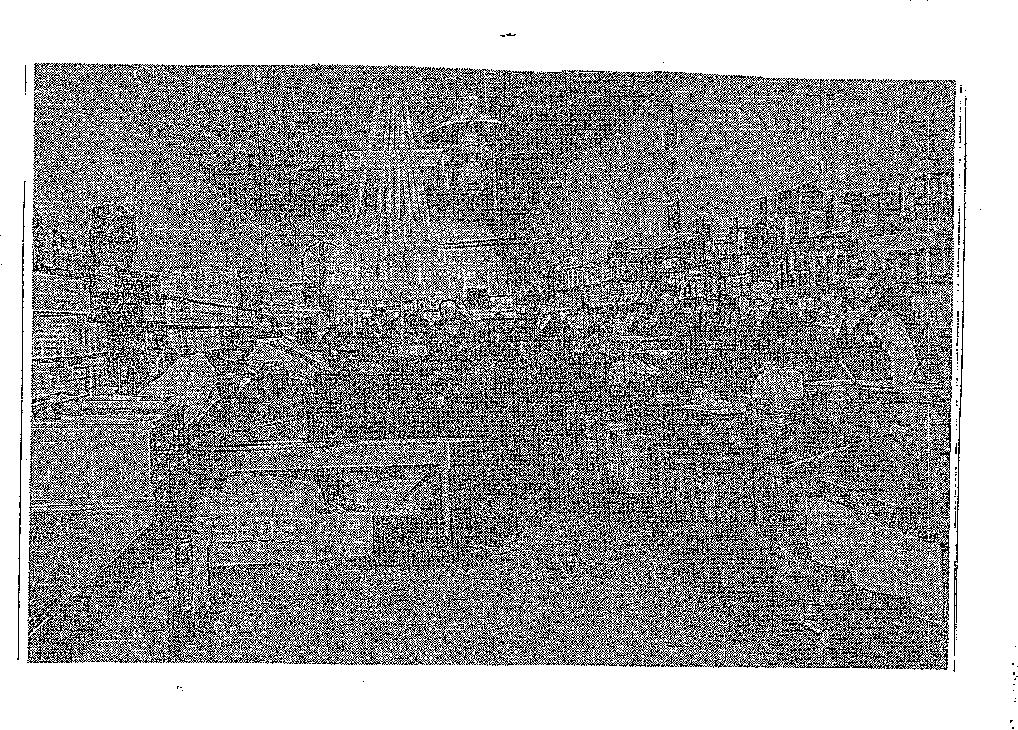
OSCEOLA TOWNSHIP
By Joann Barton
The writing about the township is based on an anonymous manuscript in which the statements made concerning the early history of Osceola Township are so in accord with the old records, their authenticity cannot be doubted. A family by the name of Richards came from Warren County and located a claim in the year 1850. If this is correct, they would be the first white settlers in Osceola Township. Alexander Collier settled in the south part of Osceola Township in 1851. In May of the same year, the William Gardner family moved from Warren County amd settled on a claim, where they built a log house on what afterwards became the Jake Lingle farm.
On October 13, 1851, the sale of lots was held and 25 lots brought $551. The lot on which the Howe hotel (Garner hotel) stands was purchased by John Sherer for $28. Osceola lots were purchased by persons from Chariton, Albia, Fairfield, Keosauqua and Warren Counties.
People would go 10 miles to assist in a house raising. These houses had puncheon floors and clapboard roofs. When sawmills came, timber was used instead of logs. Keokuk was the trading point for this country and it took two weeks to make a round trip with oxen, the only teams used for freighting in the early '50s. One dollar per hundred was the price for hauling. Salt was $10 per barrel and whiskey was about the same price.
An amusement was horse racing. The running race course was from the center of the alley on the east to side of the square to the 2nd street south of the square, a quarter of a mile. The first horse race I ever saw was over this course, December 25, 1854. There was no snow on the ground and it was a pleasant day. The purse was $10.
We have seen flour sell for $10 per hundred pounds, but potatoes were cheap. Flour and potatoes make the best of bread and when you know how to do it. . . Good milk cows sold for $7 to $9 each. Gold and silver was the desirable money. We had paper money, but it was unreliable; might be good today and tomorrow worth nothing.
The county charged 4% per month on delinquent taxes — 48% a year! It had been customary to sell the speculators and nonresident's land for taxes, but when the tax buyers came in and bid off the resident's land for taxes, the fun began. The first man that did it came near being whipped. But a compromise was offered and after that, taxes were paid more promptly.
Prairie fires were almost as destructive as cyclones in these days, for they would burn buildings and grain. In one instance, several people were burned to death in Ward Township.
When we look over the records of the early days and see the names of the pioneers of Clarke County, we are astounded; for in comparison they were as giants. free hearted, open handed, stalwart men fit to fill any place from Justice of the Peace to President of the United States. When they made a promise, it was carried out to the letter. When they signed a paper, whether by a cross or in writing, the conditions were met, even if it took all they had.
Public school report for the year commencing September 13, 1869, and closing June 7, 1870, shows the number enrolled: males 244, females 256.,The average daily attendance: males 130, females 148. Total enrollment for the year 500. Average for the year 278. The school was divided into the primary department, secondary department, intermediate department, grammar department and high school.
J.C. Harrison, a Civil War veteran, came to Osceola in 1866, to visit a war-time friend, Jim Reed. Reed had opened a grocery here at the close of the war, Harrison liked the country and stayed, entering a partnership with Reed. Harrison later became sole owner and it was known as the Harrison Grocery until his death 20 years later. This picture was taken in the '90s.

CO1VIMUNITY OF CHRIST CHURCH
By Elder Tom Meyers
The roots of the Community of Christ Church dates back to Joseph Smith Jr, who officially started the Church of Jesus Christ of Latter Day Saints on April 6, 1830.
On June 27, 1844, Joseph Smith Jr. was murdered in Illinois. Because of his death, the Church leadership was in turmoil. The Reorganization believed that Joseph Smith Jr. had
designated his eldest son, Joseph Smith III to be successor as president of the Church. He was only 11 years old at that time. So the leadership decided to wait until Joseph Smith III was old enough to take his rightful place in leadership. Others followed leaders with varying claims to leadership scattering in all directions. The most recognized leader was Brigham Young. Many followed him to Utah where they kept the name "Church of Jesus Christ of Latter Day Saints"
(Mormon's, as they were known).
During this time splinter groups developed. The Reorganized Church came into being in the 1850's. Joseph Smith III was made the president of the Church on April 6, 1860, in Amboy Illinois. The Church was named "The Reorganized Church of Jesus Christ of Latter Day Saints". In 1895, Graceland College (now Graceland University) in Lamoni, Iowa was opened. The Churches' headquarters has been in Independence, Missouri since April 1920.
Members of the Osceola Reorganized Church of Jesus Christ of Latter Day Saints first met in February 1947, to organize a weekly study group. Meetings were held in the home of members and later at the Osceola Public Library until the fall of 1950.
No meetings were held again until the spring of 1952. Members then met in the home of Mrs. Christine Housheer to organize a mission with Elder Roland Prather of Lamoni as pastor and Elder Aquilla McPeek as assistant pastor. Starting in July 1952, services were held in the Lyric Theater and the Hausheer home until October 1956, when the mission moved to the Church of the Brethren. The Brethren later sold the building to the Reorganized Church of Jesus Christ of Latter Day Saints. The church is located at 414 East McLane Street.
From 1968-72 the building was extensively remodeled and an addition was built. All the labor was donated. About 55 persons attended services at the church. Vernon E. Kent was the pastor. He served the church since 1973. More recent pastors have been Elder Glenn Israel, Elder Ed Morris and Elder Kenn Dunn. Since 1997, Elder Tom Meyer has served as pastor.
The Church changed its name to "Community of Christ" in April 2001.
HISTORY OF OSCEOLA FIRST CHRISTIAN CHURCH
By Evelyn Pritchard
In June of 1855, a group of Clarke County people met in the log cabin home of James Polly four miles northeast of Osceola, IA, (near the current home of Billie & Alice Chase), and organized the First Christian Church in the county.
During the ensuing ten years, services were held in homes, in the court house, vacant store buildings and when the weather permitted, in groves.
|
On July 1, 1865, the members planned to buy ground on which to erect a church building. They purchased a lot on the west side of the Osceola square for a consideration of $300. A frame church was erected in 1866, on the lot across the alley north from the present Lyric Theatre (the Oliphant Building. That name is still evident on what in 2011, is the Community Center.). The church was built at a cost of $1200, and the membership was about 100 at that time. The church continued in this building for the following 28 years, but in 1893, it was felt that the congregation had outgrown the old building and a new one was planned. The lot for the new church was located at 300 So. Main Street and a large structure was built. At the time of the dedication of this new church, the description was |
printed with great detail. "Outside, the building has charmed the people by its elegance, its picturesque towers, gables and cornices. Inside, it contains an
auditorium, at the end of which is a Christian Endeavor room, a library and reading room. There is also a ladies' parlor, pastor's study, and a cloak room. All the extra rooms opening into each other so they can be thrown open into one for social gatherings.
A scroll behind the pulpit had the words, "No creed but Christ." An angel above the pulpit soars up with another scroll saying, "Preach the Word." The walls from the balcony rise in four arches meeting high in the center of the ceiling. The pulpit and choir in the alcove behind, are at the west end and the balcony stairs ascend on each side of the pulpit. There are three very large stained glass windows and overall, they have a very handsome church. The church was fully paid for when it was dedicated January 28, 1894.
In 1949, it became apparent more space was needed for church activities and Sunday School use. In the summer of 1951, a 2-story annex was added, and dedicated on June 2, 1952. Rev. Warren Hile was the pastor who served, a congregation of nearly 900.
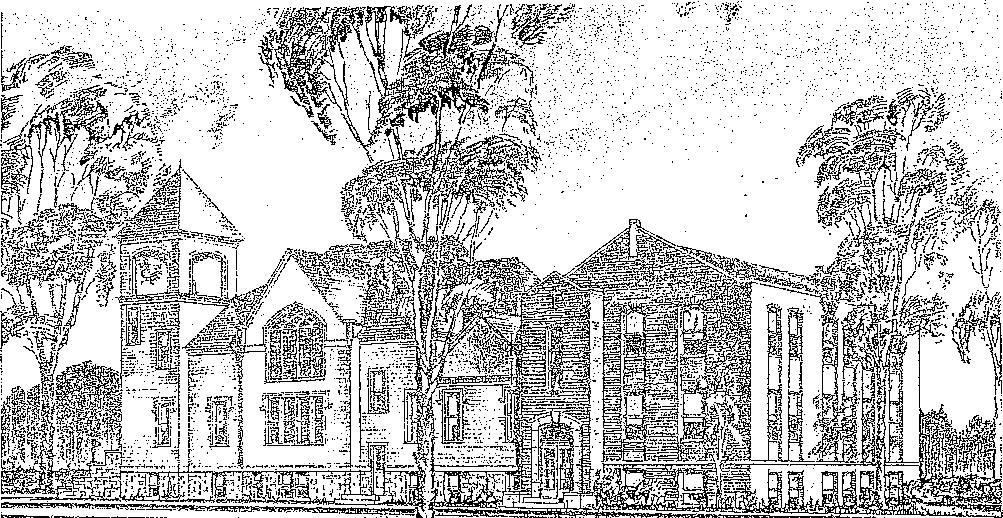
Early on Sunday morning, February 7, 1954, tragedy struck. A fire fully engulfed Osceola's largest church and all was destroyed except for a portion of the newly added annex. The interior of the 50-year-old frame structure was all on fire when a passing tourist turned in the alarm about 3:00 a.m. Sunday and flames had broken through the roof a few minutes later when firemen arrived. It was evident from the start that there was little or no chance of saving the building. However, a half dozen streams of water were poured into the building in vain hope of drowning out the flames. About a half hour after the fire was discovered, the accumulated gas in the big auditorium and basement suddenly exploded. The blast sent great clouds of smoke and dust billowed out in every direction.
Flames shot high into the air and the stained glass windows blew out, probably saving the entire structure from collapsing. The big window in the north was blown across the street onto the parking. Although there were a number of firemen close to the building, when the blast came, not one of them was struck by the debris. Fire Chief Otis Keller was the only fireman hurt, having received some cut fingers when he crawled through a window in the annex.
After the blast, all efforts were turned to preventing the spread of the fire to surrounding buildings. No one thought the parsonage, standing some 20 feet south of the church, could be saved. Four streams of water were brought into play, keeping the roof and walls of the house and the south wall of the church wet. By the time the church wall finally burned down, the greater part of the heat was gone. The paint was barely blistered on the parsonage.
Volunteers moved the household effects of Rev. and Mrs. Warren Hile from the parsonage in a matter of some ten minutes and then turned their attention to the Court Carter home immediately west of the church. The Carter's household goods and the entire stock of children's wear were moved out of danger.
After the main portion of the church began to burn out, it appeared that there might be some chance of saving some of the annex and the fight moved to that locality. Water quenched the flames but only a shell remained. It is hoped a considerable amount of lumber can be salvaged from it.
Seven lines of hose were laid from the two fire trucks. The new city truck was stationed at the hydrant across the street east of the church and five lines were strung from it. The rural truck used the hydrant at the Presbyterian Church a block west with three lines.
The two trucks pumped water for nearly nine hours before dog tired firemen took them back to the fire station. In mid-afternoon Sunday, the alarm was sounded again and the firemen,
roused from their sleep, returned to pour more water on embers that had flared up again.
Fire Chief Keller said he could not determine the cause of the blaze. It is not believed to have started from the furnace. Rev. Hile and the caretaker, Milo Crawford, left the church late Saturday night and made their usual tour of inspection before locking up and found nothing wrong at that time.
Besides the firemen, who worked as a well-dlsciplined team all during the fire, there were dozens of volunteers who helped in every way they could. Women from the Methodist church started coffee in the basement of their church and after the electricity was cut off when the blast came, they moved their coffee urns to the Webster Funeral Home and other nearby residences where it was brewed. They put up a table near the fire truck and firemen were served coffee and other refreshments.
Services were held at the Lyric Theater Sunday morning following the fire until plans could be made and committees formed to work on the numerous problems that had and will come up. The Lyric Theatre was also made available for Sunday school and church services by owners, John Waller and Robert Hutte. The school board granted use of the West Ward School and the firemen allowed the use of their hall for a nursery. Several of the churches made their buildings available and meetings were held in the Methodist and Presbyterian Churches.
The new building was started in 1955. The design of the sanctuary is functional Gothic for both beauty and utility. The pointed arches crown the vault at the highest point and hold the eyes' attention at the height. The soft and restful colors of the interior decor are subdued so they will not detract from the spiritual center of the sanctuary, the chancel. A lighted Rose Window is located directly in the middle high above the baptistery.
Part of the educational unit did not burn completely and was added onto and remodeled for the present unit. Evidence of this can be seen in the basement classrooms and floors. The Church Bell which was rescued following the fire is located near the front entrance of the church, a reminder of our long history. This same bell was first dedicated January 28, 1893 and was in constant use until the fire. Dedication held the following year on November 11th, 1956.
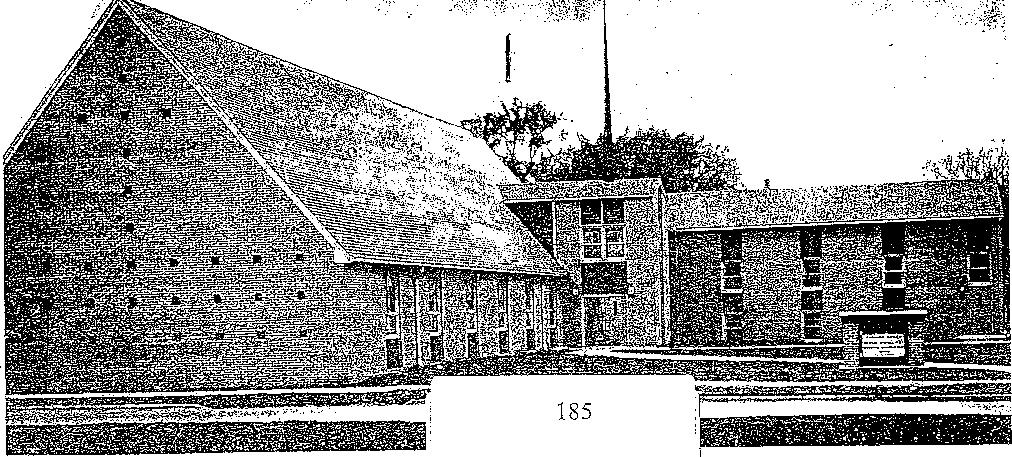
OSCEOLA METHODIST CHURCH
At one time there were three Methodist Churches in Osceola — Methodist Protestant, Methodist Episcopal, and African Methodist.
METHODIST HISTORY IN OSCEOLA
In 1854, Osceola, Iowa, was 3 years old, consisted of a settlement of 7 houses, and had a population of 133. Rev. Mr. Davis formed the Methodist Episcopal Society with 12 members. This was the first church organized in Osceola. Services were generally held in a schoolhouse on the corner of Cass and Adams streets, or in the old frame courthouse on the north side of the square. Sunday School was organized and met in a room on the east side of the square.
The Methodist Protestant group had separated from the Methodist Episcopal (governed by bishops) Church, in 1830, because of a dispute over the power of the bishops and the lack of lay representation at the Annual Conference. In the archives of the United Methodist Church is a booklet about the M.P. Church begun by Freeborn Wesley Johnson, who had been a member of the Methodist Protestant church in Indiana. He became desirous of organizing a Methodist church of equal rights in Osceola. He invited all who were interested in the cause to meet at his home. In November 1854, the society was organized at the residence of F.W. Johnson, under the name of the Methodist Protestant Church of Osceola, Iowa.
There have been three church buildings since the organization began. The first was known as the "Blue Church". In 1856, "Uncle Wesley" purchased a residence on East Washington Street and remodeled it into a suitable church building. Services were held there until 1864, by which time the congregation had outgrown the building and plans were begun for the erection of a new building. A new site was chosen and a building erected on the corner of Webster and Main Street. The building was known as "The Brick Church", dedicated in 1865.
PERSONAL MEMORIES OF THE OSCEOLA M. P. CHURCH
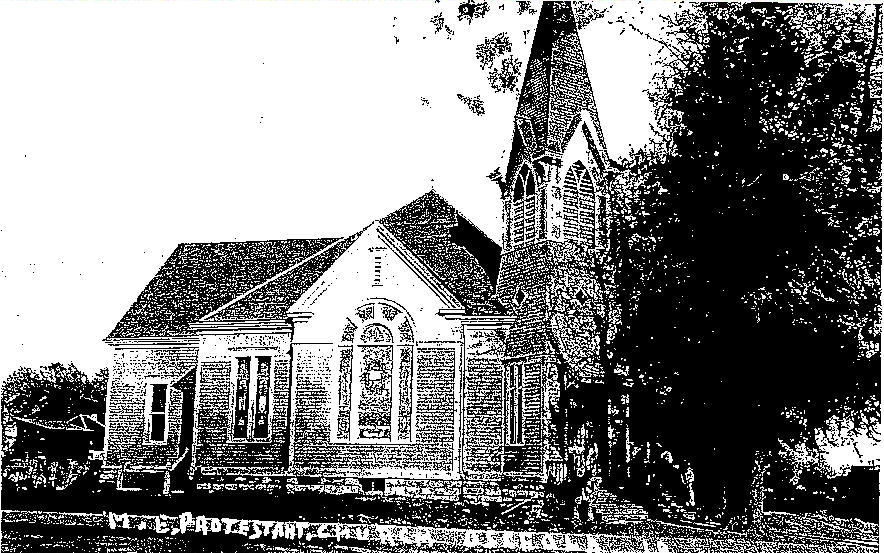
Memories of Don McGahuey and Wayne Steele from Leon, go back to the 1930s. They remember that the Trinity Methodist Church on the corner of Main and Webster was a white frame building. The foundation was buttressed by a wide structure erected some feet from the building. The sanctuary was semi-circular in shape, the floor tilted toward the pulpit. The supporting structure beneath the floor was quite intricate. In the vestibule was the entrance to a balcony, and a huge rope hanging from the bell. Don was one of two boys required to ring the bell 15 minutes before the 11 :00 service on Sunday mornings.
Vivian Hutchings recalls that the church was so close to the railroad tracks, it was necessary to pause during the service whenever a train went through. "It was no big deal. We simply stopped and started again. There was also so much vibration at those times that the church rattled and things sometimes fell off shelves onto the floor. Vivian also emembers that their congregation was made up of hard working-class, blue collar people, whereas they thought of the M.E. church people as wealthier.
A prominent member of the church, Warren McComas, was a delegate to the uniting conference held in High Point, North Carolina, in 1939. At that time the Methodist Protestant South, which was created at the time of the Civil War, the Methodist Protestant (M.P.), and Methodist Episcopal (M.E.) Churches United.
The official declaration of uniting does not reflect the trauma experienced in local communities. The actual union in Osceola came about 1947-48. The attempts in the interim were gradual. Combined services were held occasionally, but some members of the M.P. church chose the option of forming another church rather than joining the M.E. They became the Community Bible Church, and when the Calvary Baptist bought the building, some of the MP members chose that denomination.
The African Methodist Episcopal Church was organized at Osceola. The church building was on the corner of Temple and Washington. Their membership was 20-25.
|
1894 |
In 1968, there was the merger of the Methodist Church and the Evangelical United Brethren, creating the United Methodist Church. It was at that time the congregation moved from the building on the corner of Main and Cass Streets to the new church on West Grant and Fillmore.
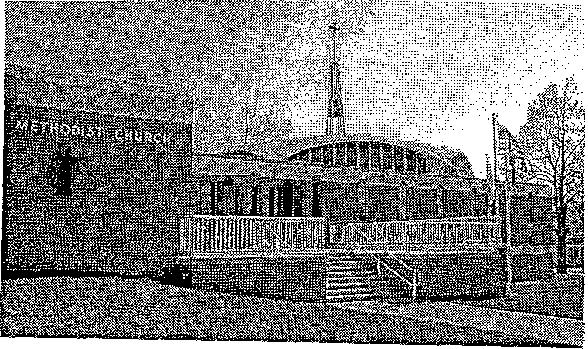
HISTORY OF THE OSCEOLA PRESBYTERIAN CHURCH
From materials provided by Marilyn {Mrs. Dan) Foster
The Presbyterian Church of Osceola was organized in 1858, with 8 charter members, Judge James Rice being the prime mover. Services were held for the most part in the old wooden Court House on the north side of the square. In 1867, the foundation of a church was laid a block north of the northeast corner of the square next to the railroad tracks.
J.V. Banta |
J.V. Banta, whose name has come down through history as a prominent Osceola citizen, founder of Banta Abstract Company, and builder of the Victorian house at 222 West McLane, came to Osceola a few weeks before the dedication of the church and has written, "Without any money of my own, on the day of dedication, I put down $50 and paid it." toward what he referred to as the prettiest church in town. The completed brick building, dedicated in March 1969, cost $6,500 and was completely paid for at that time. |
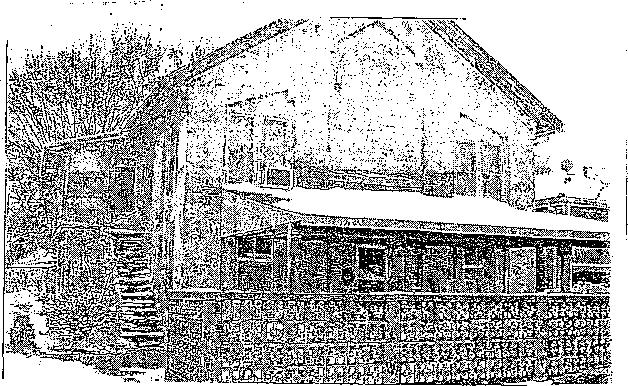
DEDICATION OF PRESBYTERIAN CHURCH
April 25, 1869
The dedication of the Presbyterian Church took place last Sabbath, according to previous announcement. The day was auspicious. The house was filled to its utmost capacity by an attentive audience. The sermon of the Rev. P. H. Jacob was very appropriate and interesting. After the sermon, Judge Rice, in behalf of the trustees and building committee, made a statement with reference to the beginning and progress of the enterprise, in which he stated that the church lot was donated to the congregation by Mrs. Martha Howe.
The whole cost of the building, furniture, bell, and fencing was $5,800, $3,000 of which was paid, and during the past month subscriptions had been obtained to the amount of about $1,300, leaving about $700 to be provided.
The names of the subscribers to the recent subscription and the amount given was read. After a few earnest and telling remarks by the Rev. Sheldon Jackson of Minnesota, papers were circulated for additional subscriptions, which resulted in raising $610. The balance was readily raised, and the pastor announced they were ready to dedicate the house of Almighty God, and proceeded to give the dedication prayer.
Plan of the church was a donation from John McArthur, a Philadelphia architect, and the superstructure was erected under the supervision of Squire Freeman.
Thanks was given to Judge Rice, W.G. Kennedy and Mr. Hutsinpillar for their zeal in carrying out the building plan.
In 1906, Rev. George Cotton became the pastor and began campaigning for a new church. The principal reason was the the proximity to the railroad. During the Sunday morning services, one mail train and two passenger trains arrived and loaded and unloaded mail and passengers. Being the steam type, they made a great deal of noise interfering with worship. While Rev. Cotton had the sympathy of the congregation, matters of finance and location prevented it from happening until ten years later. By bank loans and consecrated effort on the part of all the church members, The Guild and Ladies' Aid had money raising projects — the Ladies' Aid made and sold many quilts — the men working equally hard, their efforts resulting in a church building on the corner of South Fillmore and West Cass, with next door manse, costing $25,000, was dedicated debt free on February 13, 1916.
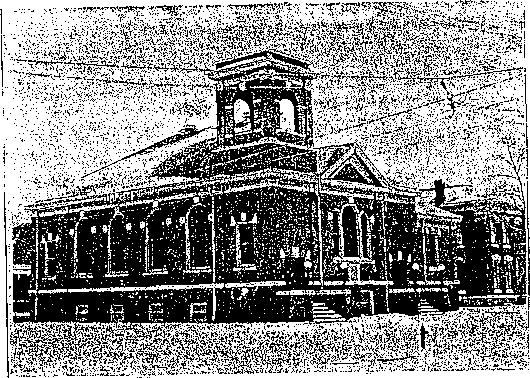
In 1998, for lack of attendance, the church was dissolved. In 1990, the building at 230 South Fillmore was offered for sale and on that very day it was bought by Jim and Alan Lundquist to rescue it from being used for commercial purposes. They restored the building from basement to bell tower, assured that it was structurally sound and sold it to the congregation of the Evangelical Free Church.
PRESBYTERIAN CHURCH STORY
Memories of the little brick church written by Elizabeth Mooberry 1887-1980
Back in the covered wagon days (when Grandpa wore a beard and Grandma wore long skirts and even the little girls were well covered) the rich rolling hills and fertile plains of Iowa lured the pioneers to a new though rugged life of promise and prosperity. The many hardships only added zest to the adventure. But the temporal life was not everything to most of these new settlers. There was also the more important lasting joy of the spiritual life. So with the log cabins, sprang up the schools and churches. One of which was organized by a little group of Presbyterians in the little village of Osceola. After several years of struggle, the little brick church was built. Soon afterward the railroad went through right beside it to mar its quiet serenity.
To me it was thrilling to drive up to the hitching rack with the shade of the beautiful maples at the south side and go up the board plank walk at the east, open one of the double doors into the pleasant hall. Our pew was on the north so we entered the sanctuary through the north entrance. The main pews seating 10 or 12 were in the center with a partition between, and small side seats for three or four. All were painted a light blue with brown varnish trim at the top. The slanting backs made them more comfortable than the traditional straight backs. The first pew in front was the Judge Rice family pew with the J. V. Banta's well-cushioned pew next. Then Grandpa Hutinspiller's, and then my father's (Harvey).
Behind were the Agnew's, Kiddo, and others. The first pew on the south side was Ridgeway's, then Richards, then Whitmore, Findley, Inghram, Temple, Senator Tallman and others. The back seats were for visitors. We've reversed things now.
My first vivid memory is of sitting between my parents bashfully enjoying the songs and choir music floating out from the back of the pulpit as I thought how wonderful to be in the choir and sing solos. My time came, however, when Dott and I, AI Winters, Mrs. Alexander and Dad Savage were solos and all. My very being was thrilled as Grace Goetchus sang "Calvary." Later Katie Davies' rich contralto was a joy to hear.
I even dreamily listened to some of the sermons (Dad told us to) of the Spirit filled and otherwise pastors. Dad sometimes slipped up on us and asked us what was the text or what the sermon was about. I never knew!!
What interested me the most was the painting on the deep cream wall above the heads of the choir. There were two rich dark red curtains parted and pulled back to reveal a scroll on which was painted in letters of gold that great truth of scripture, "Mans chief end is to glorify God and enjoy Him forever". Around all was God's glory shining out in rays of streaming gold. I could understand a-right of how a person could glorify God. Weren't my Godly parents and grandparents glorifying him with their devotion and love? But how could you enjoy God? I was afraid of him, though I could sense his love as I looked up at the stars and this beautiful world around me. It took me many years to learn to enjoy God a little by serving him.
My first Sunday School class was in the gallery over the entrance hall and was taught by Aunt Lucy. At the Christmas program she tried to bribe me to speak my first piece but on the
platform the words would not come and finally I sat down ashamed and disgraced, but she gave me a basket anyway. Some other fine teachers were Edith Whitmore, Nellie Inghram, Mrs. Agnew and her girls Stella and our faithful Sadie Slosser.
I once tried to read my Sunday School paper in church. Mrs. Agnew grabbed it from behind batting her merry twinkling eyes at me shaking her head. If Dad had noticed he would have lectured me as only he knew how to do it. I would also like to mention our veteran fine Sunday School teacher, Nellie Inghram. I was in her class at different ages and she knew the worth of memorizing the golden text. Truly she has been faithful down through the years and her teaching has born fruit that only God can measure.
One Sunday p.m. when Aunt Lucy had gone with us from church to our home two miles southwest of Osceola, she and Dott and I went after the cows for Dad. When we heard the church bell ring for evening service, Dott looked up at Aunt Lucy and said "aren't you glad we've got ears? And aren't you glad we have church bells to ring out the challenge to 'glorify God and enjoy him' while it is day for 'the night cometh when no man can work'?
The old church bell still rings out...to call us to worship service away from our idols of silver and gold and worldly pleasure and pride of life and love of self — the things we love more than we love God. They are our idols. May the church bells never cease to ring in America. May Godless Christ-less communism be kept far from the shores of our beloved nation and be vanished from our world. But to do it, America will have to awaken out of sleep and recognize the sinister damage in failing to "preach the gospel to every nation". The fields are "white unto the harvest". It may be later than we think.
If you look closely at some of the brick in the church you would have seen the imprint of our oak leaf placed there by Aunt Lucy as she played around the brick kiln where grandfather Hutsinpiller's family made brick for the new church. It was a tremendous undertaking and he hauled them a distance of 12 miles with horse and wagon.
At one time after the phonograph had been invented, a relative of Jessie Rice's, visiting from Chicago, thrilled us with an evening of phonograph music (when they were very new). I remember standing out in front of the church waiting for Sunday School to be taken up, when Jessie came briskly up the walk to announce, "I'm 18 today." Mama told me to wash the dishes this morning and I said, "I'm 18, do it yourself:" When I asked Mama to button my dress in the back, she said, "You're 18, do it yourself."
When it was proposed that they put an organ in the new church, Grandmother Hutsinpiller was very much against it. She thought it was an instrument of the devil.
Then there was the time in prayer meeting when Rev Wile (from. Scotland) began to dance around excitedly and grabbed his trouser leg thinking there was a mouse in it and how sheepish he looked when it proved to be a false alarm.
Mrs. M. L.Temple (wife of U. S. District Attorney) popped corn and sold it at gatherings to have her own personal contribution to the new church. She passed on just before it was completed, but she had a part in its building. The names of members were Sowash, Temple, Findley, Tallman, Grandma Hutsinpiller, Aunt Lucy, Agnew's, Tom Rice and Savage
The only sermon which stands out in my memory was Rev. Baker's farewell sermon. As I see it now, there must have been some church trouble. Perhaps he had been preaching some hard hitting sermons and had been hurt by criticism. Although an elder from 1892 to 1932 (his death), Dad never criticized pastors to us girls or anyone else. It might hinder the work. Certainly Rev. Baker's sermon was meant for a careless, indifferent church. His text was Rev. 20:11:before the great throne of judgment, bow before Christ. His face fairly shone as he thundered forth his message of judgment if we failed to repent of our sins and get forgiveness. Very few sermons before or since have stirred me as that one and certainly the congregation must have felt it. Dad's great concern (as an elder) was to get spirit filled pastors.
The history of the little brick church would not be complete without mentioning Sadie Agnew Slosser, Jessie Rice, Ed Banta and Nellie Inghram (pioneers in the church);Nellie Inghrams 65 to 70 years of Sunday School teaching has born much fruit that only God can measure. A look at her sweet serene countenance bears this out. Paul's challenge to us is Romans 12: 14 and 15. ("Bless those who persecute you; bless and do not curse them. Rejoice with those who rejoice, weep with those who weep.")
1890-1999 The Catholic church in Clarke County was organized in 1885, with the Reverend Father Sheridan of Chariton saying the first mass in the Osceola mission. Saint Bernard's first church was built in 1890, at a cost of $1400 and claimed 150 parishioners. Once a month, the Chariton priest came to Woodburn, which was an earlier and larger parish than Osceola. He arrived in Osceola by train at 10:30 AM, spent the day, and returned on the 4:00 P.M. train. In. 1925, Saint Bernard's parish was assigned a priest, Father William Daly, who lived at 301 East McLane. The present house was built in 1932, at a cost of $3500. |
|
For many years, mass was held in that small wood frame building with a stove in the middle of the sanctuary. Many of us recall the music that inspired us as the choir sang from the loft. In 1958, our innovative priest, Father Gerald Deere, purchased a self-propelled lawn mower on which the operator could ride. The alter boys all clamored to run the gadget after daily mass —thus no need for a janitor. The yard was a quarter of a block long, acquired from the Fortney
family. In 1959, our present church was built at a cost of less than $100,000 under the direction and inspiration of Father Deere. It was completed with 1% money borrowed from the Bishop's fund and much hard work from the 60 families of the parish. The sense of community we felt as we worked together is one treasured by each member.
The 1990's, brought more updates and changes to keep our church comfortable and inviting. The ramp on the west side was added in 1995. In 1998, the furnace was replaced and the long awaited central air conditioning was installed. Many exciting plans are underway to usher in the new millennium. The sound system and lighting will be modernized. Ceiling tiles in the basement are being replaced and new color schemes will be chosen for carpet and paint in the sanctuary. Our new Spanish-speaking families have brought an addition of Latino Masses. Progress is truly a community effort and we look forward with anticipation to growing in our faith.
Fall Dinner History: 1939 — 2011
By Linda Coma and Mary Jo Schade
Researching the history of St. Bernard's Catholic Church Fall Dinner has been a fascinating experience and continues to be ongoing. Linda and.Mary Jo have been involved in the fall dinners since 1981, and believe this was the second year of the fall dinner being restarted as a fundraiser under the guidance of the Ladies Auxiliary. They contacted members of the parish in an attempt to establish a timeline of fundraising at the church. Although there are gaps in the years, this is what is remembered.
LaVera Cottrell remembers that in the late "30's" and early "40's" Perry Diehl's wife (Fred's mother) would go to the Woodburn Catholic Church to recruit ladies to furnish chickens for fried chicken dinners at the Fourth of July celebrations in Osceola. It is thought that this may have been the beginning of fundraisers for the church.
JoAnn Wilson remembers in the "50's", driving around picking up cabbages from parishioners to make coleslaw for turkey dinners. The dinner was held at the fairgrounds because the church did not have a basement. The new church was built in 1959, the current location for fall dinners. The menu consisted of turkey, coleslaw, potatoes and gravy, green beans, pies and desserts. During the "60's" Father Lawrence Burns (1962-1966) enlisted the services of a chef from Younkers in Des Moines who cooked hams and roast beef for the dinner. It is also thought that the chef did an ice sculpture for the dinners.
It was during the early "80's" that the fall dinners began as we know them now. Mary Pedersen, Mary Landis, and Linda Conn organized the dinners that included food donations, ordering supplies, and work assignments for parishioners. Saturdays were spent cooking (and slicing) turkeys, breaking bread for dressing, getting lettuce ready for salad, and decorating tables. As much of the preparation for Sunday that can be done early, is completed on Saturday. The men of our parish set up tables, get the steam/utility room ready and set up the steam table on Saturday, and the Knights continue to do this.
Red Stamand "trained" Bernie Schade in the steam/utility room and after Red moved in 1985, Bernie has continued to man the room. The early Sunday morning crew consisted of Mary and Gerald Pedersen, Linda and Rick Conn, Bernie and Mary Jo Schade, Dean Hayward, Bernadine Simmerman, Mary Landis, and Bob Elmore. Hams were cooked in very large tubs in the steam room and then sliced. Meat slicers included Dean Hayward, Darwin Thayer and Bob Pontius. Dean and Dick Murphy made the mashed potatoes and Dick continues to do so to this day. Many boys over the years have assisted with the potatoes including the Lampes and Rychnovskys. These young men also retrieved the many salads that were stored in a refrigerated ice truck that was parked in the alley. Turkeys, buckets of broth, salads, and milk were also stored in the truck. The Conn and Schade kids did dishes, carried trays, and assisted in any way their parents volunteered them for.
The dressing chefs were Mary Pedersen and Mary Landis, and after Mary Landis moved, Gerald began helping Mary. Now Art and Marcia Pontier prepare the dressing and Mary continues to be the official dressing tester. Our gravy maker was Bernadine, who also supplied homemade rolls for the crew. Now Linda Conn makes the gravy with Mary Jo being her chief critic. Mary Pedersen continues to make homemade cinnamon rolls for the early morning crew and Gerald cooks scrambled eggs.
The "pie room" ladies diligently sliced every pie to perfection and have passed that skill down to others throughout the years and they along with the kitchen and dining room helpers included Mary Allison, Kathryn Flynn, Kitty Grogan, Eve Miletich, Mabel Shay, Avis James, Jackie Jamison, Irene Bonnett, La Vera Cottrell, Virgie Doran, Georgia Yearington, Margaret Davenport, Johanna Draper, Florine Minnick, Nellie Conwell, Evelyn Sunds, LuElla Pontier, Willodean Pontier, Pat Murphy, Betty Murrane, Lois Dau, Jo Ann Wilson, and Lee Hayward and they served our parish well. Lee continues to help by leading a group of volunteers on Saturdays in setting the tables and getting the dining room ready for Sunday and Jo Ann helps in the kitchen on Saturday.
We have gone from cooking sixteen turkeys and eleven hams and serving seven hundred people to cooking twelve turkeys (pre-cooked sliced ham is now donated by Osceola Foods) and serving three hundred people. A few years ago Amy Bishop and Karen Keefe started doing the organizing and now Janet Walkup has taken over the organization of the dinner and Karen Burgus and Teresa Gerling have joined Linda and Mary Jo on Saturdays to cook and slice turkeys. Welcome additions to the early Sunday morning crew include the Burgus' and Gerlings. Other Sunday morning helpers include Brad Lampe and Jake, Joe and Mitch. They help with potatoes, carrying food to steam table, and opening vegetables.
As the dinner begins, many members of our parish are needed to man the dining room. People are needed to keep the salad table and dessert shelf filled, pour drinks, clear and reset tables, take tickets, serve meat, and help diners with whatever they may need. At the conclusion of the dinner, numerous volunteers are needed for cleanup.
Fall Dinner Memories:
The welcome mat is always out for new volunteers to join us. Money raised from fall dinners has benefitted our church over the years. Although many parishioners mentioned in this article have moved or passed away, the memories and the time we spent together on "fall dinner" day is priceless.
Return to main page for Recipes for Living 2011 by Fern Underwood
Last Revised February 14, 2015